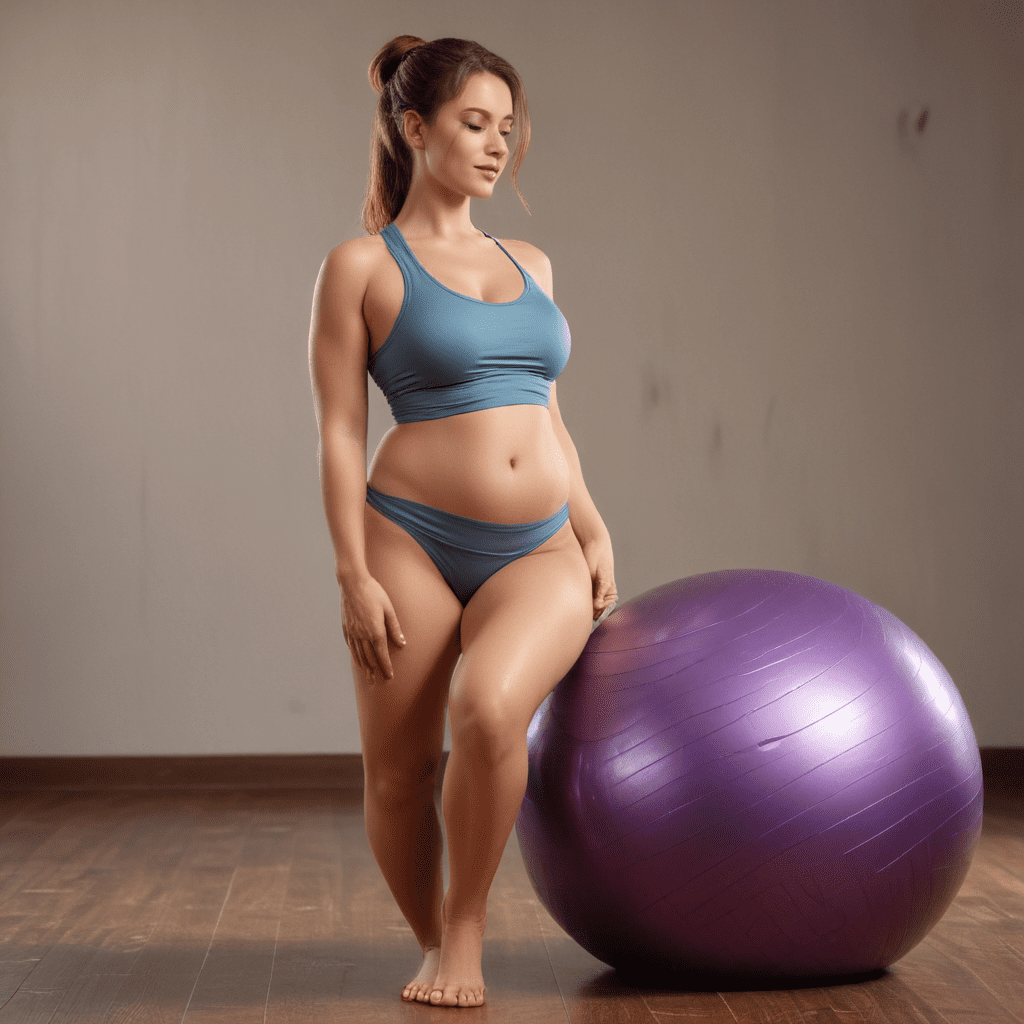
Introduction
Maintaining balance is crucial during pregnancy and postpartum recovery. Shifting weight distribution, hormonal changes, and a growing baby can affect balance, leading to instability and falls. Stability ball exercises offer a safe and effective way to improve balance, strengthen core muscles, and enhance overall fitness during these critical periods.
Safety Precautions
- Always consult your healthcare provider before starting any exercise program during pregnancy or postpartum.
- Choose a stability ball that's appropriate for your height and allows your feet to rest flat on the floor when seated.
- Perform exercises on a non-slippery surface with a spotter nearby for assistance.
- Listen to your body and stop if you experience any pain or discomfort.
- Maintain proper form throughout the exercises, focusing on engaging your core muscles and maintaining a neutral spine.
Types of Stability Ball Exercises for Balance
- Seated Rock: Sit on the ball with feet hip-width apart. Gently rock your pelvis forward and backward, keeping your back straight and core engaged.
- Ball Knee Tucks: Holding the ball with both hands, lie on your back with knees bent and feet flat on the floor. Slowly bring your knees towards your chest, rolling the ball towards your buttocks.
- Ball Bridges: Lie on your back with feet flat on the floor and heels resting on the ball. Lift your hips off the ground, squeezing your glutes and keeping your core engaged.
- Plank with Ball: Start in a plank position with forearms on the floor and toes resting on the ball. Maintain a straight body line and hold for 30 seconds.
Exercises for Early Pregnancy (First Trimester)
Focus on gentle balance training in the first trimester. Start with seated exercises and progress to modified versions of exercises like planks and bridges.
Exercises for Mid-Pregnancy (Second Trimester)
Gradually increase the intensity and duration of your exercises as your pregnancy progresses. You can now incorporate more challenging exercises like ball knee tucks and standing side-to-side rolls on the ball.
Exercises for Late Pregnancy (Third Trimester)
Modify exercises for comfort and safety in the third trimester. Opt for seated exercises, wall-supported exercises, and avoid lying on your back for extended periods.
Postpartum Stability Ball Exercises
Focus on exercises that restore balance, core strength, and pelvic floor control. Start with gentle exercises like seated pelvic tilts and progress to standing exercises as your body recovers.
Additional Benefits of Stability Ball Exercises During Pregnancy
Beyond balance improvement, stability ball exercises offer numerous benefits:
- Reduced back pain and improved posture: The unstable nature of the ball engages core muscles, promoting better spinal alignment and alleviating back pain.
- Strengthened pelvic floor muscles: Many exercises engage the pelvic floor, crucial for supporting the growing uterus during pregnancy and for preventing incontinence after childbirth.
Resources and References
- National Institutes of Health: https://www.nichd.nih.gov/health/topics/physicalactivity/conditioninfo/exercise_pregnancy
- The American College of Obstetricians and Gynecologists: https://www.acog.org/womens-health/faqs/physical-activity-during-pregnancy
- International Childbirth Education Association: https://icea.org/
FAQs:
Can I use a stability ball if I have back pain?
Consult a healthcare professional for guidance. Using the ball with modifications or choosing alternative exercises might be necessary.
Is it safe to exercise on a stability ball if I have high blood pressure or other health concerns?
Always get clearance from your doctor before starting any exercise program during pregnancy. They can advise on appropriate exercise modifications and precautions.

